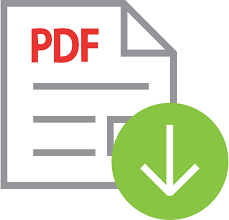Visitor segmentation of heritage tourist attraction in Indonesia using google trend analysis
 (1),
Ni Putu Dyah Krismawintari (2),
I Wayan Ruspendi Junaedi (3),
PA Andiena Nindya Putri (4),
I Made Sumartana (5),
(1),
Ni Putu Dyah Krismawintari (2),
I Wayan Ruspendi Junaedi (3),
PA Andiena Nindya Putri (4),
I Made Sumartana (5),
(1) Universitas Dhyana Pura, Bali, Indonesia
(2) Universitas Dhyana Pura, Bali, Indonesia
(3) Universitas Dhyana Pura, Bali, Indonesia
(4) ITB Stikom Bali, Bali, Indonesia
(5) Universitas Ngurah Rai, Bali, Indonesia
 Corresponding Author
Corresponding Author
DOI : https://doi.org/10.29210/020221673
Full Text:
 Language : en
Language : en
Abstract
Keywords
References
Al Mana, A. M., & Mirza, A. A. (2013). The impact of electronic word of mouth on consumers’ purchasing decisions. International Journal of Computer Applications, 82(9).
Aprianingsih, A., Setiawan, M., Affandy, F. B., Immanuel, B. C., & Fachira, I. (2020). Factors Affecting Celebrity Endorsement on Purchase Intention Through Instagram Fashion Online Shop: An Indonesian Perspective. International Journal of Marketing, Communication and New Media, 8(15).
Ashworth, G. J. (2004). Tourism and the heritage of atrocity: managing the heritage of South African apartheid for entertainment. In New horizons in tourism: Strange experiences and stranger practices (pp. 95–108). Cabi Publishing Wallingford UK.
Belleflamme, P., & Neysen, N. (2009). Advances in Tourism Economics. In Advances in Tourism Economics: New Developments. https://doi.org/10.1007/978-3-7908-2124-6
Canny, I. U. (2013). An empirical investigation of service quality, tourist satisfaction and future behavioral intentions among domestic local tourist at Borobudur Temple. International Journal of Trade, Economics and Finance, 4(2), 86.
Carlsen, J. (1999). A systems approach to island tourism destination management. Systems Research and Behavioral Science: The Official Journal of the International Federation for Systems Research, 16(4), 321–327.
Carneiro, H. A., & Mylonakis, E. (2009). Google trends: a web-based tool for real-time surveillance of disease outbreaks. Clinical Infectious Diseases, 49(10), 1557–1564.
Çekim, H. Ö., & Koyuncu, A. (2022). The Impact of Google Trends on the Tourist Arrivals: A Case of Antalya Tourism. Alphanumeric Journal, 10(1), 1–14.
Choi, H., & Varian, H. (2012). Predicting the present with Google Trends. Economic Record, 88, 2–9.
Cuthbert, A. R., & Suartika, G. A. M. (2017). Revisiting Reuter: Symbolic and material economies in Bali aga society. Jurnal Kajian Bali (Journal of Bali Studies), 7(1), 259. https://doi.org/10.24843/jkb.2017.v07.i01.p14
Delmont, E. (2004). South African heritage development in the first decade of democracy. African Arts, 37(4), 30.
Divisekera, S. (2003). A model of demand for international tourism. Annals of Tourism Research, 30(1), 31–49. https://doi.org/10.1016/S0160-7383(02)00029-4
Echtner, C. M. (2002). The content of Third World tourism marketing: a 4A approach. International Journal of Tourism Research, 4(6), 413–434.
Feng, Y., Li, G., Sun, X., & Li, J. (2019). Forecasting the number of inbound tourists with Google Trends. Procedia Computer Science, 162, 628–633.
Kartajaya, H. (2002). Hermawan Kartajaya on marketing. Gramedia Pustaka Utama.
Katal, A., Wazid, M., & Goudar, R. H. (2013). Big data: issues, challenges, tools and good practices. 2013 Sixth International Conference on Contemporary Computing (IC3), 404–409.
Krisnayani, N. K., Liestiandre, H. K., & Pranjaya, I. G. P. A. (2021). Pengaruh Media Sosial Dan Daya Tarik Wisata Terhadap Keputusan Berkunjung Wisatawan Domestik Di Pantai Melasti, Bali. Jurnal Kepariwisataan, 20(2), 134–143.
Marie, A. L., & Widodo, R. E. (2019). Pengaruh Online Reviews terhadap Online Hotel Booking Intentions, Study Kasus pada Traveloka. Jurnal Ilmiah Pariwisata, 24(3), 194–207.
Mukhtarom, H., & Prasetio, A. (2020). Rating Analysis of Service Quality, Comfort, Cleanliness, Food and Location of Hotels in DIY to Customer Satisfaction in Hotel Customers in Traveloka. International Journal of Multicultural and Multireligious Understanding, 6(6), 682–692.
Nafah, H. K., & Purnaningrum, E. (2021). Penggunaan Big Data Melalui Analisis Google Trends Untuk Mengetahui Perspektif Pariwisata Indonesia di Mata Dunia. SNHRP, 3, 430–436.
Parlindungan, H. H., Sukwika, T., & Manurung, H. (2021). Prambanan Temple Tourist Destination Development in Indonesia as World Cultural Heritage. European Journal of Science, Innovation and Technology, 1(3), 39–56.
Rusmini, M. (2001). Manajemen pemasaran. Andi Offset. Yogyakarta.
Seyidov, J., & Adomaitienė, R. (2016). Factors influencing local tourists’ decision-making on choosing a destination: a case of Azerbaijan. Ekonomika, 95(3), 112–127.
Siau, K., Lim, E.-P., & Shen, Z. (2001). Mobile commerce: Promises, challenges and research agenda. Journal of Database Management (JDM), 12(3), 4–13.
Simamora, H. (2000). Manajemen pemasaran internasional. Jakarta: Salemba Empat.
Singh, R. P. B. (2015). Heritage value of religious sites and built archetypes: the scenario of Hinduism, and illustrating the riverfront Varanasi. Aatmbodh, the Journal of Knowledge of Self, 12(1), 21–40.
Suartika, G. A. M., Cuthbert, A. R., Putra, G. M., & Saputra, K. E. (2020). Public Domain and Cultural Legacy: The Governance of a Sacred and Vernacular Cultural Landscape in Bali. ISVS E-Journal, 7(2), 1–22.
Sulistyafani, A., & Sastrawan, I. G. A. (2021). Pengaruh Citra Destinasi Terhadap Minat Kunjungan Ulang Wisatawan Di Pantai Pandawa, Bali. Jurnal Destinasi Pariwisata, 9(1), 96–104.
Swabawa, A. A. P., Pemayun, I. D. G. A., & Sagitarini, L. L. (2018). Analysis of Creative Product Potentials of Pandawa Beach, Kutuh Village, Bali. Soshum: Jurnal Sosial Dan Humaniora, 8(2), 113–122.
Utama, I. G. B. R. (2018). Correlation Between Motivations Of Visit Tanah Lot Toward Interest With An Agro Farm Visit In Tabanan Bali. The 2 Nd Bali International Tourism Conference, 131.
Utama, I. G. B. R., Junaedi, I. W. R., Putri, P. A. A. N., & Krismawintari, N. P. D. (2022). Determining The Popularity of Island Tourist Destinations Using Google Trends Analysis. International Journal of Social Science, 2(2), 1257–1266.
Vilarinho-Pereira, D. R., Koehler, A. A., & de Souza Fleith, D. (2021). Understanding the use of social media to foster student creativity: A systematic literature review. Creativity. Theories–Research-Applications, 8(1), 124–147.
 Article Metrics
Article Metrics
 Abstract Views : 844 times
Abstract Views : 844 times
 PDF Downloaded : 0 times
PDF Downloaded : 0 times




